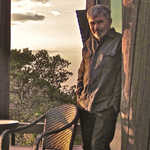Last year my son was in grade 6 and as part of the social studies curriculum, one of the units they were taught was the history of the Aboriginal Peoples of Canada, specifically on the Plains Indians. The class was taught how the Natives lived off the land, hunted the buffalo and how the buffalo was used in various ways. The children learned about the tipis, the canoes and then of course, the fur trade. I believe learning all this is a very important part of our curriculum, but I feel like it is lacking. There was nothing taught about art, stories, or culture (besides the buffalo hunt). Maybe I did not see all of my son’s work, or hear everything they were taught, but I believe the curriculum should elaborate more on the culture of the Aboriginal people then and now. I think if the kids were taught a bit more of how Native traditions have carried forth into the present and how they are being preserved for future generations there will be less stereotypical thinking of the Native population today. When I looked the curriculum up on the internet, I found that the Black Line Masters curriculum is being used for Manitoba. This is an excerpt from it: “students have opportunities to interact with each other in democratic groups and communities, and to acquire the knowledge, values, and skills they need to become active, responsible citizens within our Canadian society. As they grow and learn the skills of citizenship, they not only contribute to their learning communities, but also contribute to the betterment of our society. Just as knowing oneself means knowing one’s history, fully understanding the new social studies curriculum requires knowing something of its history. The Manitoba curriculum was created through a culturally collaborative process; diverse voices guided the process, and the result is a social studies curriculum that better reflects the cultural reality of Canada.” I am not sure that learning the history and not carrying it forth into the present reflects the cultural reality of Canada. I live in a very small town with hardly a Native population at all, but there are Reserves and Native populations surrounding our area. I wish more was taught to help with racism and stereotypical thinking. With some more searching, I found that a new project (From Apology to Reconciliation: Residential School Survivors) was created to help Manitoba students in grades 9 and 11 to understand the history of the residential school experience and it’s influence on today’s Canada. This was developed in response to the Government of Canada’s formal apology in 2008 to Aboriginal people who attended residential schools. I think this is a step in the right direction and hope that when my son gets to grade 9 that this is still in the curriculum and that even more will be added. www.mssta.mb.ca/PDF/curiculum/grade6.pdf http://www.edu.gov.mb.ca/k12/cur/socstud/far/doc/index.html
Filed Under
Other moments in Brandon
-
prairie first nations, indigenous, Brandon Story Class
Stolen Sisters......
in Brandon, Canada -
prairie first nations, indigenous, Brandon Story Class
Brandon, Manitoba Industrial School
in Brandon, Canada -
prairie first nations, indigenous, Brandon Story Class
Susan, Swampy Cree Woman.
in Brandon, Canada -
indigenous, prairie first nations, Brandon Story Class
Fort Desjarlais (1836-1858)Fort Desjarlais is remembered as the largest fort, most prominent and most successful of the Souris River trading posts in the fur trading days in Manitoba.
in Brandon, Canada -
prairie first nations, indigenous, Brandon Story Class
John Norquay (1841-1889) First Metis Premier of Manitoba.
in Brandon, Canada -
prairie first nations, indigenous, Parks
Stott Site and the Buffalo Jump.
in Brandon, Canada -
indigenous, prairie first nations
Friendship Centers...
in Brandon, Canada -
Brandon Story Class, indigenous, prairie first nations
"The legend of the White Horse"
in Brandon, Canada -
brandonstoryclass
We took in a stray kitten last year. He has the most peculiar mannerisms such as sleeping at the sink.
in Brandon, Canada




